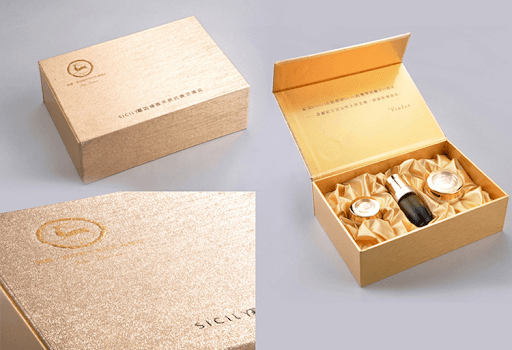Environmentally Friendly Cosmetic Packaging: A Sustainable Solution for the Beauty Industry
As consumers become increasingly aware of the impact their purchasing decisions have on the environment, the beauty industry is making strides to create more sustainable and environmentally friendly packaging options. From recyclable materials to biodegradable packaging, there are a variety of options available for those looking to reduce their environmental footprint.
One of the most popular environmentally friendly cosmetic packaging options in the beauty industry is recyclable packaging. This includes materials such as glass, aluminum, and certain types of plastic that can be recycled after use. Many brands are also making efforts to reduce the amount of packaging they use overall, opting for smaller, more compact designs that use less materials.
Another option gaining popularity is biodegradable packaging, which is designed to break down naturally over time. This includes materials such as bamboo, paper, and plant-based plastics. While these materials may not be as widely available as traditional packaging options, they offer a more sustainable alternative for those looking to reduce their impact on the environment.

The Importance of Environmentally Friendly Cosmetic Packaging
As a responsible and environmentally conscious industry, we understand the importance of reducing our carbon footprint and minimizing the impact of our products on the environment. Cosmetic packaging is a significant contributor to plastic waste, and it is our responsibility to find sustainable solutions to this problem.
Environmentally friendly cosmetic packaging offers several benefits that go beyond reducing plastic waste. Here are a few reasons why we believe it is essential:
1. Reducing Plastic Waste
The most obvious reason for using environmentally friendly cosmetic packaging is to reduce plastic waste. Traditional cosmetic packaging is often made from non-biodegradable plastic materials that take hundreds of years to decompose. By switching to sustainable packaging materials, we can significantly reduce the amount of plastic waste generated by our industry.
2. Protecting the Environment
Non-biodegradable plastic packaging not only takes up space in landfills, but it also harms the environment in other ways. It can pollute waterways, harm wildlife, and contribute to air pollution. By using eco-friendly packaging, we can minimize our impact on the environment and protect our planet for future generations.
3. Meeting Consumer Demand
Consumers are becoming increasingly aware of the impact of their purchases on the environment. By using environmentally friendly cosmetic packaging, we can meet this demand and appeal to a growing market of environmentally conscious consumers.
4. Improving Brand Image
Using sustainable packaging can improve our brand image and reputation. By demonstrating our commitment to the environment, we can attract more customers who share our values and increase loyalty among existing customers.
Overall, environmentally friendly cosmetic packaging is an essential step towards creating a more sustainable and responsible industry. By adopting sustainable solutions, we can reduce plastic waste, protect the environment, meet consumer demand, and improve our brand image.
Materials Used in Environmentally Friendly Packaging
Biodegradable Materials
When it comes to environmentally friendly packaging, biodegradable materials are a great option. These materials are designed to break down naturally over time, reducing their impact on the environment. Some common examples of biodegradable materials used in cosmetic packaging include:
- Cornstarch-based plastics
- Paper and cardboard
- Plant-based materials such as bamboo and sugarcane
One of the benefits of using biodegradable materials is that they can be composted after use, which helps to reduce waste. However, it’s important to note that not all biodegradable materials are created equal. Some materials may only break down under specific conditions, so it’s important to choose materials that are certified as compostable.
Recyclable Materials
Another option for environmentally friendly packaging is recyclable materials. These materials can be reused multiple times, reducing the need for new packaging and reducing waste. Some common examples of recyclable materials used in cosmetic packaging include:
- Glass
- Aluminum
- High-density polyethylene (HDPE) plastic
When choosing recyclable materials, it’s important to consider the recycling infrastructure in your area. Not all materials are accepted by all recycling programs, so it’s important to choose materials that are widely accepted.
Reusable Materials
Finally, reusable materials are another option for environmentally friendly packaging. These materials can be used multiple times, reducing the need for new packaging and reducing waste. Some common examples of reusable materials used in cosmetic packaging include:
- Refillable glass or plastic containers
- Reusable cloth bags or pouches
- Metal tins or jars
One of the benefits of using reusable materials is that they can help to reduce overall packaging waste. However, it’s important to ensure that the materials are durable enough to withstand multiple uses, and that they can be easily cleaned and sanitized between uses.
In conclusion, there are a variety of environmentally friendly materials that can be used in cosmetic packaging, including biodegradable, recyclable, and reusable materials. By choosing the right materials, we can reduce our impact on the environment and help to create a more sustainable future.

Innovative Design Approaches for Green Packaging
Minimalistic Design
When it comes to environmentally friendly cosmetic packaging, minimalistic design is a great approach. Minimalistic design focuses on simplicity and functionality, which reduces the amount of material needed for packaging. This approach also reduces the carbon footprint of the packaging by using fewer resources in production and transportation.
Minimalistic design can be achieved through the use of simple shapes and materials. For example, using a clear glass jar with a simple label instead of a plastic jar with a complex design reduces the amount of material used and also makes the packaging more recyclable.
Multi-Use Packaging
Another innovative design approach for green packaging is multi-use packaging. Multi-use packaging is designed to be used for multiple purposes, reducing the amount of packaging needed overall. This approach also encourages customers to reuse the packaging, reducing waste and promoting sustainability.
Multi-use packaging can take many forms, such as a refillable container or a product that has multiple uses. For example, a product that can be used as a moisturizer and a hair conditioner reduces the need for two separate products and therefore reduces packaging waste.
In conclusion, minimalistic design and multi-use packaging are two innovative design approaches for green packaging that promote sustainability and reduce waste. By using these approaches, we can create packaging that is both functional and environmentally friendly.
Regulations and Standards for Eco-Friendly Packaging
When it comes to eco-friendly cosmetic packaging, there are several regulations and standards that we need to follow to ensure that our products are safe for the environment. Here are some of the most important ones:
The Sustainable Packaging Coalition
The Sustainable Packaging Coalition (SPC) is a membership-based collaborative that is committed to advancing sustainable packaging practices. They have developed a set of guidelines called the “SPC Definition of Sustainable Packaging,” which outlines the key attributes of eco-friendly packaging. These attributes include:
- Source reduction
- Use of renewable energy
- Use of recycled content
- Use of materials that are recyclable or biodegradable
- Safe and healthy materials
By following these guidelines, we can ensure that our packaging is sustainable and environmentally friendly.
The European Union’s Packaging and Packaging Waste Directive
The European Union’s Packaging and Packaging Waste Directive is a set of regulations that aim to reduce the amount of packaging waste generated in the EU. The directive requires that all packaging must be marked with a recycling symbol and that it must be designed in a way that makes it easy to recycle. In addition, the directive sets targets for the recycling and recovery of packaging waste.
The Forest Stewardship Council
The Forest Stewardship Council (FSC) is an international organization that promotes responsible forest management. They have developed a certification program for paper and wood products, which ensures that they are sourced from responsibly managed forests. By using FSC-certified paper and wood products in our packaging, we can ensure that we are not contributing to deforestation.
The Cradle to Cradle Certified Products Program
The Cradle to Cradle Certified Products Program is a certification program that evaluates products based on their environmental impact. The program evaluates products based on five categories: material health, material reutilization, renewable energy and carbon management, water stewardship, and social fairness. By obtaining Cradle to Cradle certification for our packaging, we can demonstrate our commitment to sustainability and environmental responsibility.
Overall, by following these regulations and standards, we can ensure that our eco-friendly cosmetic packaging is safe for the environment and meets the highest standards of sustainability.
Consumer Perception and Market Trends
Consumer Demand
We have seen a significant increase in consumer demand for environmentally friendly cosmetic packaging in recent years. Consumers are becoming more aware of the negative impact that traditional packaging materials such as plastic have on the environment and are actively seeking out alternatives.
Many consumers are looking for packaging that is biodegradable, compostable, or made from recycled materials. They also want packaging that is easy to recycle or reuse. Consumers are willing to pay a premium for eco-friendly packaging, and they are increasingly making purchasing decisions based on a brand’s sustainability credentials.
Market Response
In response to consumer demand, many cosmetic companies are now offering eco-friendly packaging options. Brands are using a range of materials, including glass, aluminum, paper, and bioplastics, to create packaging that is more sustainable.
Some brands are also using refillable packaging to reduce waste. Refillable packaging allows consumers to reuse the same container multiple times, reducing the need for new packaging.
In addition to offering eco-friendly packaging, many brands are also communicating their sustainability efforts to consumers. This includes using eco-friendly messaging on packaging, as well as providing information on how to properly dispose of or recycle packaging.
Overall, the trend towards environmentally friendly cosmetic packaging is likely to continue as consumers become more aware of the impact of traditional packaging materials on the environment. Brands that are able to offer sustainable packaging options and effectively communicate their sustainability efforts are likely to see increased consumer demand and loyalty.
Challenges in Implementing Environmentally Friendly Packaging
Implementing environmentally friendly packaging comes with its own set of challenges. We have identified some of the major challenges that companies face when implementing eco-friendly packaging solutions.
Cost
One of the biggest challenges in implementing environmentally friendly packaging is the cost. Eco-friendly materials tend to be more expensive than traditional packaging materials. This can make it difficult for companies to switch to greener options, especially if they are trying to keep their prices competitive.
Availability
Another challenge is the availability of eco-friendly packaging materials. While more and more companies are starting to offer green packaging options, there is still a limited supply of these materials. This can make it difficult for companies to source the materials they need, especially if they are trying to scale up production.
Performance
Eco-friendly packaging materials may not perform as well as traditional materials. For example, some biodegradable plastics may not be as durable as traditional plastic. This can be a problem if the packaging needs to protect the product during shipping and handling.
Consumer Perception
Finally, consumer perception can be a challenge when it comes to eco-friendly packaging. Some consumers may not be willing to pay extra for eco-friendly packaging, or they may not trust that the packaging will protect the product as well as traditional packaging. This can make it difficult for companies to justify the cost of switching to green packaging options.
Overall, implementing environmentally friendly packaging comes with its own set of challenges. Companies need to be aware of these challenges and work to find solutions that work for them and their customers.
Future Trends in Environmentally Friendly Cosmetic Packaging
As consumers become more environmentally conscious, the demand for eco-friendly cosmetic packaging will continue to rise. We anticipate several trends in this area:
- Biodegradable Materials: We expect to see a shift towards biodegradable materials such as plant-based plastics and paper-based packaging. These materials break down faster in the environment, reducing waste and pollution.
- Refillable Packaging: Refillable packaging is becoming increasingly popular in the cosmetics industry. This approach reduces the amount of packaging waste generated and encourages consumers to reuse their containers.
- Minimalist Packaging: Minimalist packaging, with a focus on simplicity and functionality, is gaining popularity. This approach reduces the amount of material used in packaging and makes it easier to recycle.
- Innovative Materials: We anticipate the development of new, innovative materials that are both eco-friendly and functional. For example, mushroom-based packaging is a promising alternative to traditional plastics.
- Smart Packaging: Smart packaging, with features such as QR codes and NFC tags, can help consumers make informed choices about their purchases. This technology can also be used to track the environmental impact of each product.
Overall, we believe that the future of environmentally friendly cosmetic packaging is bright. As consumers and companies become more aware of the impact of packaging waste on the environment, we expect to see continued innovation and progress in this area.

 By Sofier
By Sofier




